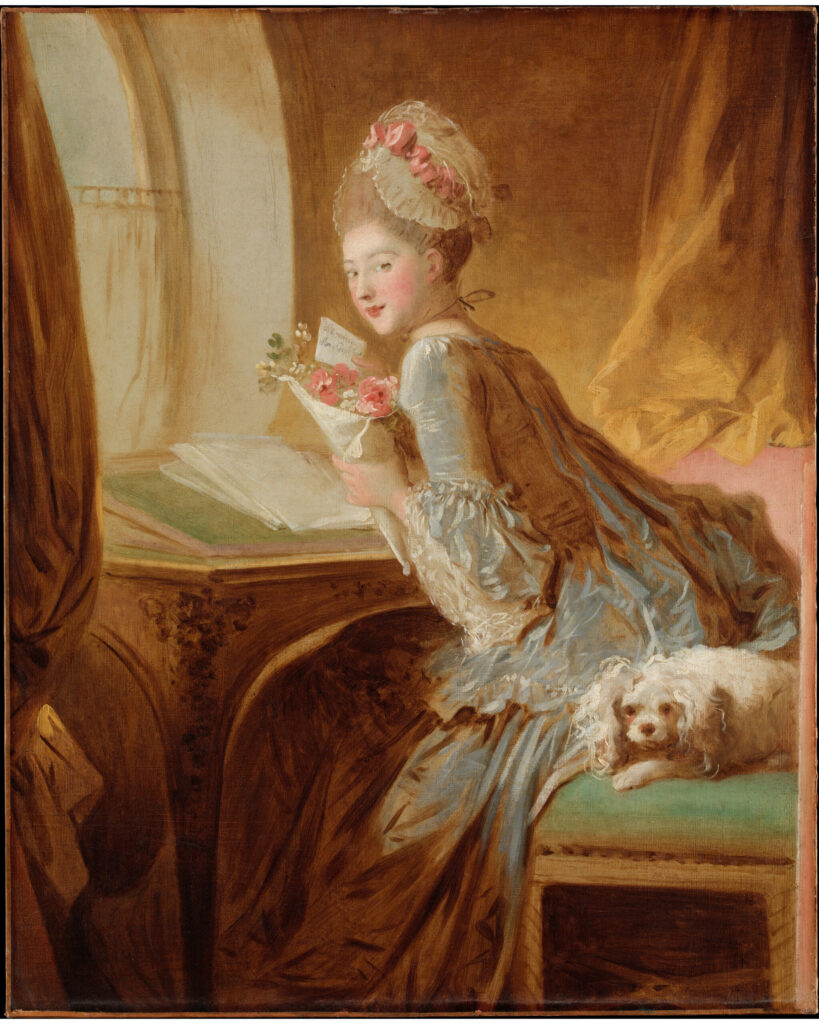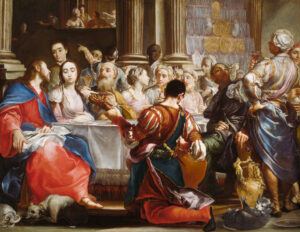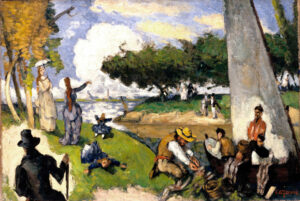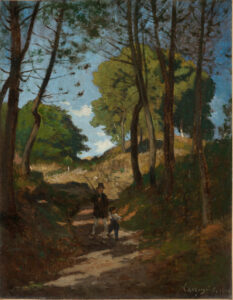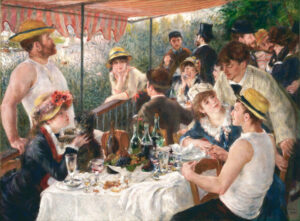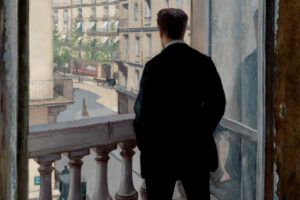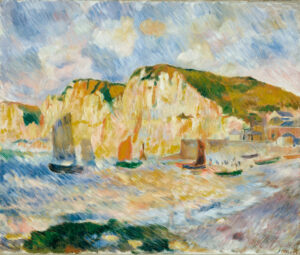In this celebrated work held at the Metropolitan Museum of Art, Fragonard immerses us in the intimacy of an 18th-century boudoir scene with dazzling technical virtuosity. “The Love Letter” captures a moment of grace where a young woman, dressed in a shimmering blue silk gown, delightfully reads what appears to be a love letter.
The composition is masterfully orchestrated, bathed in golden light that illuminates the reader’s playful face, her bonnet adorned with pink ribbons, and her dress with silky folds. At her side, a small white dog with tousled fur completes this scene of domestic intimacy.
Fragonard’s brushwork is particularly rapid, light, almost vaporous, perfectly conveying the hushed atmosphere and spontaneity of the moment. His painterly strokes create an effect of movement and vivacity that characterizes the Rococo style at its zenith. The bouquet of flowers accompanying the note adds a touch of romance and freshness to the composition.
This painting was once part of the collection of the famous Baron Feuillet de Conches before later joining the Metropolitan Museum of Art.
Further Context
- The Love Letter by Jean Honoré Fragonard, 83.2 x 67 cm, c. 1770
- 32 3/4 x 26 3/8 in. (83.2 x 67 cm)
- The Metropolitan Museum of Art, Fifth Avenue, New York, displayed in Gallery 631
- https://www.metmuseum.org/art/collection/search/436322
Jean-Honoré Fragonard (1732-1806) is an iconic painter of 18th-century France. A master of the Rococo style, he particularly excelled in gallant scenes and representations of aristocratic life. His style, characterized by vibrant brushwork and a luminous palette, considerably influenced his contemporaries.
Trained under François Boucher, he developed a technique that combined virtuosity and spontaneity, making him one of the sought-after artists at the court of Louis XV. His ability to capture the essence of a fleeting moment, as in “The Love Letter,” testifies to his incomparable artistic genius.

